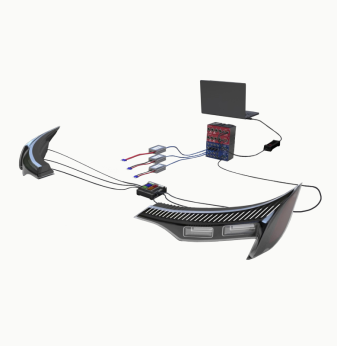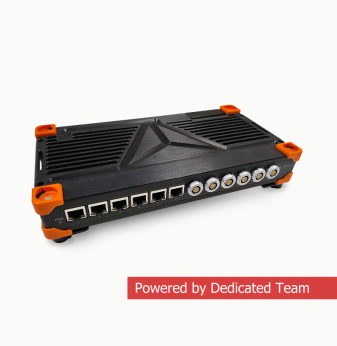Secure OTA Boot Chains and Firmware Verification: Building Trust in Connected Devices

Modern connected devices—from automotive ECUs and industrial controllers to consumer wearables—rely on firmware updates throughout their lifecycle. Over-the-air (OTA) updates allow developers to patch vulnerabilities, enhance features, and maintain compliance without recalling devices. But every remote update introduces risk: if attackers inject or modify firmware, they can seize control over millions of devices simultaneously.
That’s why secure OTA boot chains and firmware verification have become fundamental to embedded system design. Together, they ensure every line of code running on a device is authentic, intact, and approved by trusted authorities—providing a foundation for safe, resilient, and updatable connected products.
Why firmware security is the new perimeter
Traditional network security is no longer enough. Once devices connect to the cloud, the weakest point becomes their firmware. Attackers exploit unsigned updates, unverified boot loaders, or insecure communication channels to install backdoors or extract data.
In industrial and automotive settings, a single compromised node can cascade across entire systems. For example:
- In automotive ECUs, compromised firmware could alter braking or steering behavior.
- In IoT gateways, tampered updates could convert devices into botnet participants.
- In medical devices, firmware flaws can endanger patient safety.
Secure boot and verified updates form the “chain of trust”, ensuring each stage of firmware loading—from the first instruction to the final application—comes from a trusted source and remains unchanged.
Anatomy of a secure boot chain
A secure boot chain establishes a cryptographically validated sequence of trust anchors within a device’s startup and runtime flow. The concept is simple: each layer verifies the integrity of the next before execution.
- Root of Trust (RoT) — a hardware-secured component (e.g., TPM, TrustZone, or Secure Element) stores immutable code and cryptographic keys.
- Bootloader verification — the RoT validates the bootloader’s signature before it runs.
- Firmware authentication — the verified bootloader checks the main firmware image’s integrity and authenticity.
- Runtime attestation — optional continuous integrity checks during operation to detect modifications.
This cascading model ensures that if any layer fails verification, the system halts or reverts to a known good image, preventing tampered code from executing.
Extending trust to OTA updates
When firmware is distributed over the air, several additional layers of protection come into play:
- Secure delivery pipeline: the update package is encrypted, signed, and distributed via TLS-secured channels.
- Digital signature verification: the device validates the update’s signature using preinstalled public keys or certificates.
- Rollback protection: version counters prevent attackers from reinstalling older, vulnerable firmware.
- Integrity checks: cryptographic hashes (SHA-256 or stronger) confirm that data wasn’t modified in transit.
- Atomic updates: dual-bank flash or A/B partitioning allows safe updates even during power loss.
These steps together form a secure OTA chain, ensuring that only authentic, verified firmware can be installed, and that system stability is preserved even in failure scenarios.
Common attack vectors
Even with signatures and encryption, attackers still attempt to compromise the process:
- Key extraction: retrieving signing keys from insecure servers or build systems.
- Man-in-the-middle (MITM): intercepting OTA traffic to inject malicious payloads.
- Firmware modification: altering binaries after signing but before installation.
- Glitch or fault injection: forcing hardware to skip signature checks.
- Bootloader bypass: exploiting vulnerabilities in early-stage boot code.
Mitigation requires both secure processes (CI/CD signing pipelines, code audits) and secure hardware (Trusted Platform Modules, hardware isolation, anti-tamper enclosures).
Hardware roots of trust in modern devices
Hardware-based security modules are essential for reliable OTA and boot chain integrity. Common approaches include:
- TPM 2.0 / Secure Elements: storing keys and executing cryptographic operations in isolated silicon.
- ARM TrustZone / RISC-V PMP: partitioning secure and non-secure worlds to isolate boot logic.
- Secure Enclaves: handling verification, attestation, and key lifecycle management independently from main firmware.
For instance, NXP’s EdgeLock SE05x series or Microchip’s ATECC608 secure elements are widely used to anchor firmware signing and authentication. These chips execute signature verification within tamper-resistant environments, preventing secret key exposure even if software is compromised.

Firmware signing and verification in practice
Firmware authenticity is typically guaranteed via asymmetric cryptography:
- The vendor signs the firmware image using a private key.
- The device verifies it using a public key stored securely on hardware.
Modern toolchains automate this process. Examples include:
- Open source frameworks: MCUboot, U-Boot verified boot, and Yocto’s swupdate.
- Vendor stacks: NXP’s HAB (High Assurance Boot), STMicroelectronics’ SBSFU (Secure Boot & Secure Firmware Update), or Qualcomm’s Secure Boot in Snapdragon platforms.
All of them follow the same principles: integrity via hashing (SHA-256/512), authenticity via RSA/ECDSA, and optional encryption for confidentiality (AES-GCM or ChaCha20-Poly1305).
Lifecycle management and cloud integration
Firmware security doesn’t end with booting. Once a device joins a network, lifecycle management becomes vital:
- Key rotation: regularly updating certificates or signing keys to reduce long-term compromise risk.
- Revocation lists: blocking old or stolen keys.
- Telemetry and audit trails: sending signed logs to verify device health and compliance.
- Secure manufacturing: provisioning keys and certificates at production time within secure facilities.
Vendors like AWS IoT Core, Azure Sphere, and NXP EdgeLock 2GO already provide integrated services for secure key management and OTA rollout coordination.
Challenges in implementing secure OTA
Despite standardized practices, several barriers persist:
- Cost and complexity: integrating secure elements, dual flash banks, and PKI infrastructure increases BOM and development overhead.
- Key management at scale: large fleets require robust certificate authorities and rotation policies.
- Performance impact: signature checks and flash encryption can increase boot time or power draw.
- Backward compatibility: legacy devices often lack hardware support for verified boot or rollback protection.
Still, as attacks evolve, firmware verification becomes a baseline requirement across industries—especially for automotive, energy, and industrial automation.
Real-world cases
- Automotive ECUs increasingly require signed firmware under ISO 21434 and UNECE R155 cybersecurity regulations. Secure OTA update chains ensure vehicle safety and regulatory compliance.
- Industrial controllers use dual-partition architectures to guarantee safe rollback after firmware verification failures, avoiding downtime in factory automation.
- Smart home ecosystems (e.g., Matter-certified devices) rely on cryptographic update validation to maintain interoperability and trust within connected environments.
These examples demonstrate that secure OTA boot chains are not optional—they’re foundational to digital safety and reliability.
Outlook: toward post-quantum secure firmware
The next frontier is quantum-resistant firmware verification. Post-quantum digital signature schemes like CRYSTALS-Dilithium or Falcon are entering pilot use in embedded secure boot chains.
Hybrid signing—combining classical (ECDSA) and post-quantum algorithms—will dominate transitional years (2025–2030), allowing backward compatibility while adding quantum safety. Lightweight PQC variants are being optimized for microcontrollers, ensuring minimal power and latency overhead.
Within a decade, secure OTA updates will likely integrate quantum-safe cryptography, blockchain-based attestation for fleets, and hardware-anchored identity to eliminate spoofing risks.
AI Overview: Secure OTA Boot Chains
Secure OTA Boot Chains — Overview (2025)
Secure OTA and firmware verification form the backbone of modern embedded trust. They ensure only authentic, verified firmware can run or update on connected devices, protecting fleets from tampering, data theft, and service disruption.
- Key Applications: automotive ECUs, industrial IoT controllers, smart home devices, medical equipment, edge gateways.
- Benefits: end-to-end integrity, secure lifecycle management, rollback protection, compliance readiness.
- Challenges: complex key management, cost of secure hardware, backward compatibility, PQC transition.
- Outlook: hybrid post-quantum signing, automated cloud PKI, and zero-trust OTA pipelines will define the next generation of firmware security.
- Related Terms: secure boot, trusted platform module, PQC firmware signing, rollback protection, OTA encryption, lifecycle attestation.
Our Case Studies












